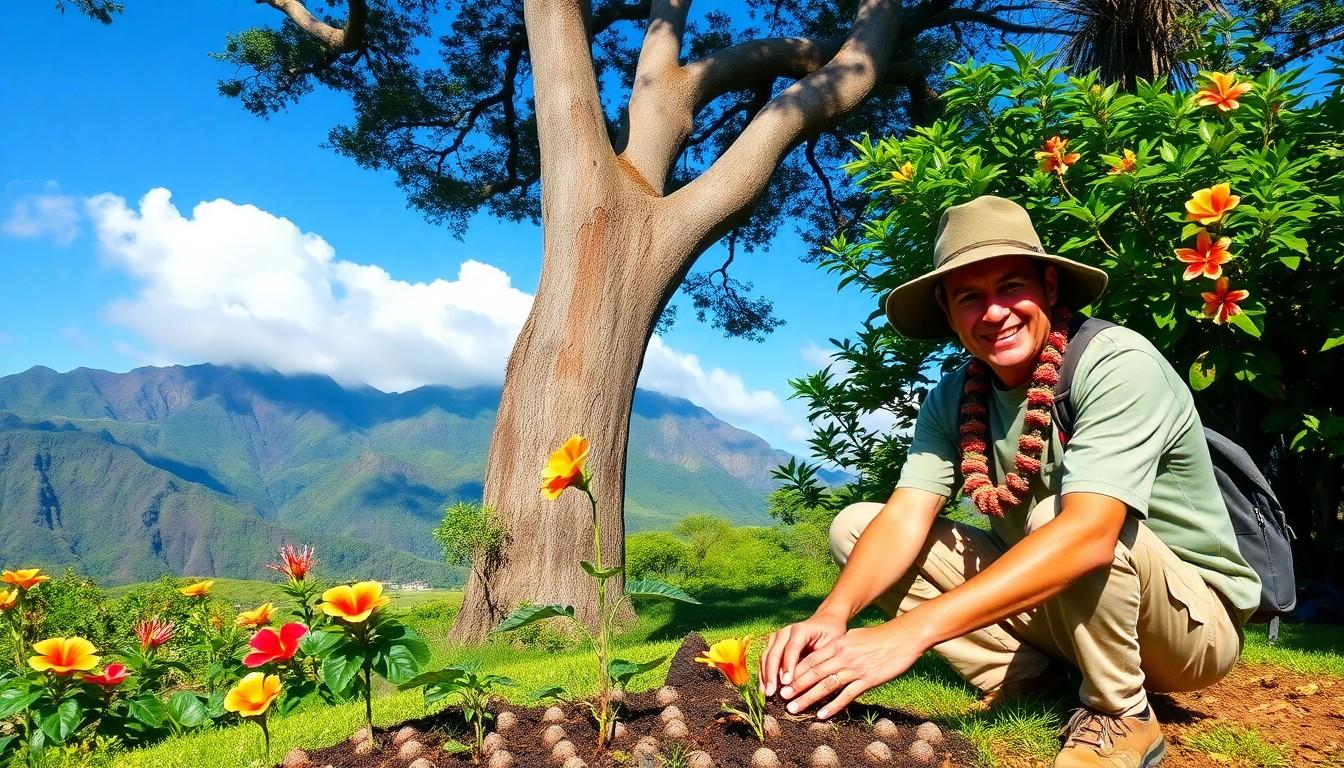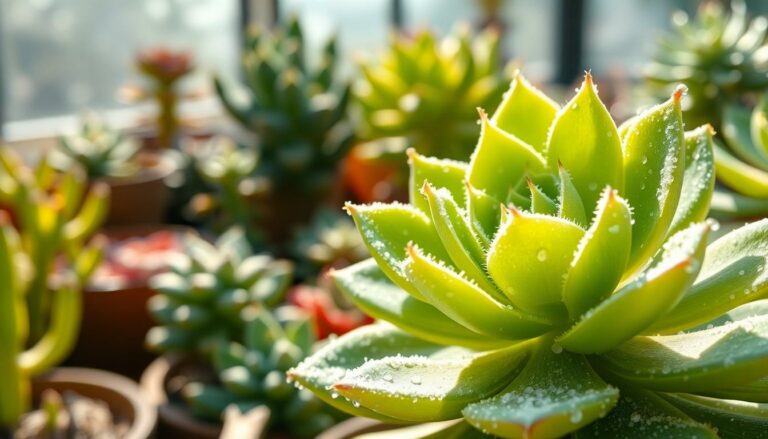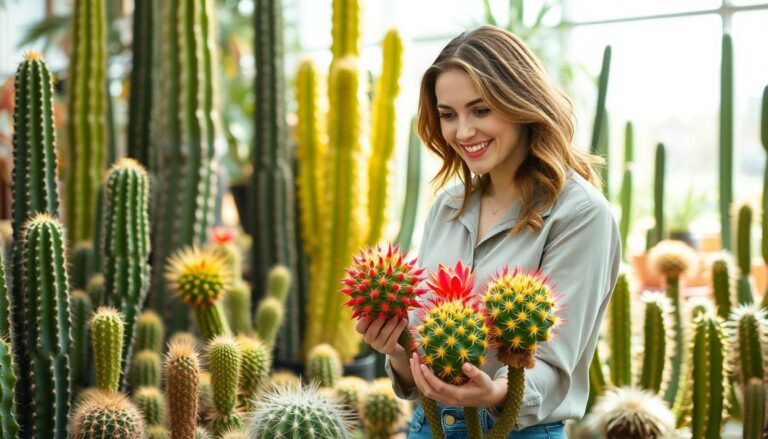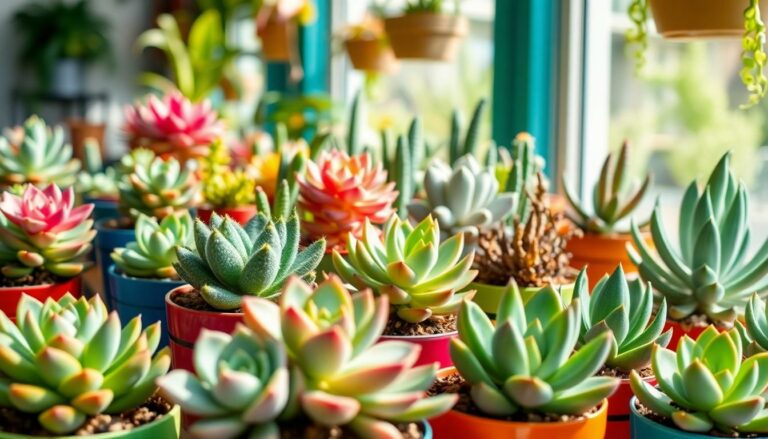Hawaii isn’t just a pretty face with its stunning beaches and vibrant culture; it’s also home to a remarkable array of native plants that deserve the spotlight. These green gems have evolved in isolation, creating a unique ecosystem that’s as captivating as a hula dancer. From the majestic koa tree to the delicate silversword, Hawaii’s native flora is not just beautiful; it’s essential for preserving the islands’ delicate balance.
Imagine wandering through lush landscapes where every plant tells a story of resilience and adaptability. These native species not only provide habitat for native wildlife but also hold cultural significance for the local communities. So why not dive into the world of Hawaii’s native plants? It’s a journey that promises to be as enriching as a bowl of poke—without the calories! Discover how these botanical wonders contribute to the islands’ charm and why they should be on everyone’s must-know list.
Overview of Native Plants to Hawaii
Hawaii’s native plants represent a remarkable aspect of its biodiversity. This unique flora evolved in isolation over millions of years, resulting in species found nowhere else on Earth. About 90 percent of the plants thrive only in Hawaii, showcasing their adaptability and resilience in various environments.
Koa trees play a vital role in the ecosystem. These large, majestic trees provide habitat and food for numerous species, including native birds and insects. Silversword, another iconic plant, thrives in harsh mountainous conditions, displaying striking silver foliage and vibrant flowers that capture attention.
Additionally, native plants like ‘ōhi’a lehua are crucial for cultural and spiritual practices. The blossoms connect to Hawaiian mythology, representing love and beauty. Understanding these plants fosters a deeper appreciation for Hawaii’s rich cultural heritage.
Various organizations focus on conservation efforts for native flora. The establishment of protected areas directly supports the survival of endangered species. Moreover, restoration programs often involve local communities, emphasizing sustainable practices and education.
Exploring Hawaii’s native plants offers insights into their ecological importance. These species not only enhance the island’s beauty but also contribute to vital ecological functions, such as soil stabilization and climate regulation. Knowledge of these plants enriches the experience of both residents and visitors alike.
Importance of Native Plants to Hawaii
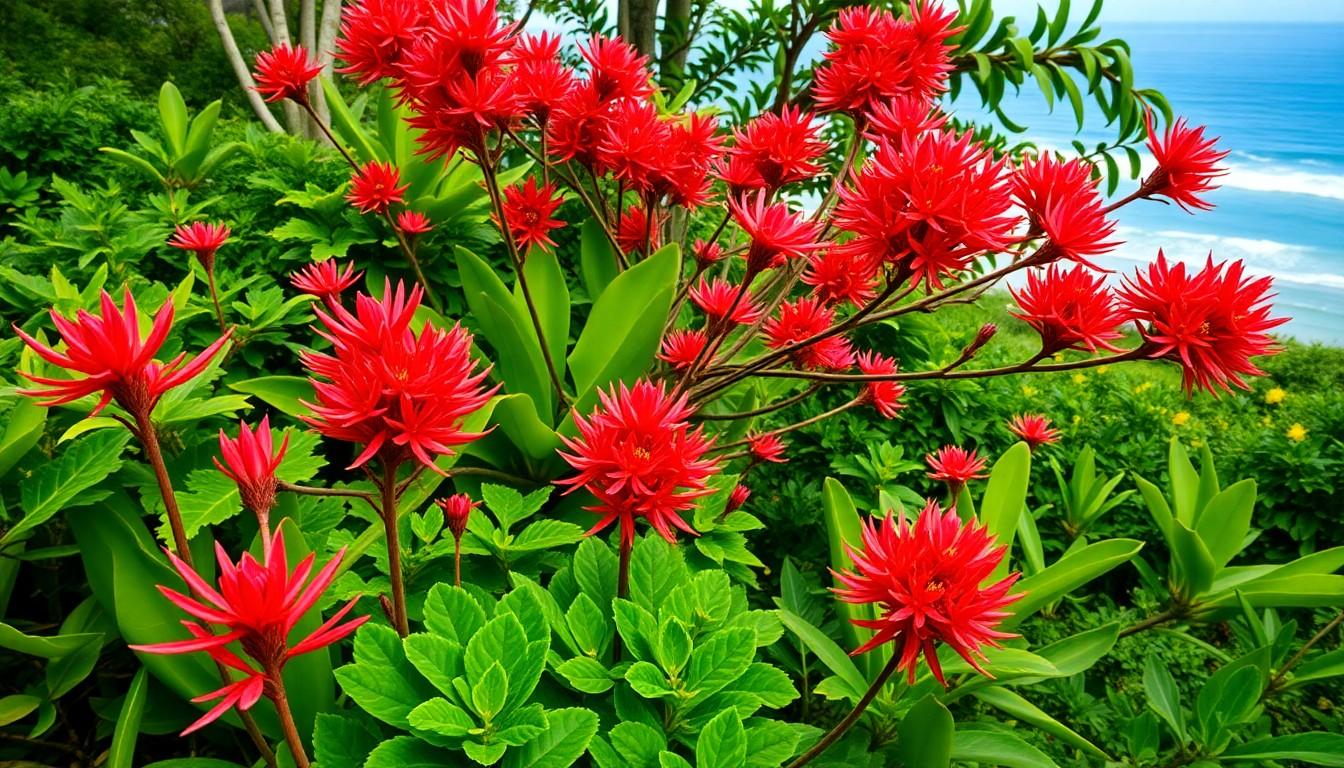
Hawaii’s native plants are crucial to the islands’ ecological balance and cultural identity. Their unique characteristics offer a variety of benefits.
Ecosystem Benefits
Native plants enhance soil stability and improve water quality. They support wildlife by providing food and habitat for birds, insects, and other species. For example, the koa tree serves as a nesting site and food source for native birds like the Hawaiian honeycreepers. Additionally, these plants reduce erosion with their root systems, protecting fragile landscapes. About 90 percent of Hawaii’s native plants exist nowhere else, showcasing their remarkable adaptability and resilience. Restoration efforts often focus on these species, as they are essential for maintaining biodiversity within the islands.
Cultural Significance
Cultural heritage connects deeply with native plants in Hawaii. The ‘ōhi’a lehua symbolizes love and beauty, often featured in Hawaiian chants and traditions. This tree embodies the spirit of the land and is vital in local mythology. Additionally, native plants like the taro crop connect to traditional practices and provide sustenance for many communities. Each plant has a story woven into the cultural fabric of Hawaii, enriching its history and identity. Preservation efforts reflect the recognition of these plants as vital to the community’s well-being and survival.
Types of Native Plants
Hawaii’s native plants encompass a diverse range of trees, shrubs, and flowers, each contributing uniquely to the islands’ ecosystem.
Trees
The koa tree stands out as an iconic species in Hawaii. This large tree, reaching up to 100 feet, provides critical habitat and food for many native birds. ‘Ōhi’a lehua thrives in various elevations, showcasing beautiful red or yellow flowers. Additionally, it plays a vital role in Hawaiian culture. The monkeypod tree, characterized by its wide canopy, offers shade and supports the local ecology. These trees foster resilience within the forest ecosystem, enhancing biodiversity.
Shrubs
Hawaiian native shrubs, like ‘ōhi‘a (Metrosideros polymorpha), adapt to different climates and contribute to habitat diversity. Found in varying elevations, these shrubs thrive in volcanic soil. The native maile (Alyxia oliviformis) holds cultural significance, often used in lei making and ceremonial practices. Moreover, the Hawaiian burnt sugar bush (Trichosporum) supports pollinators essential for plant reproduction. Shrubs like this enhance the mountainous landscapes while offering shelter for wildlife.
Flowers
Hawaii’s native flowers exhibit striking beauty and ecological importance. The silversword stands out with unique rosettes and flowers that bloom in harsh environments. This plant symbolizes resilience, thriving in barren volcanic landscapes. Other native flowers, like the Hawaiian hibiscus, offer vibrant colors and attract pollinators, including native honeycreepers. The lobelia (Brighamia insignis) displays tubular flowers, appealing to specific species. Each of these flowers contributes to the rich tapestry of Hawaii’s biodiversity, enhancing the visual splendor of the islands.
Conservation Efforts for Native Plants
Conservation efforts in Hawaii focus on protecting and restoring the islands’ unique native plants. Various organizations, including the Hawaii State Department of Land and Natural Resources, actively engage in habitat restoration projects. Programs often emphasize community involvement, encouraging local residents to participate in volunteer activities like planting and eradication of invasive species.
Restoration initiatives play a significant role in maintaining biodiversity. Specific strategies include establishing protected areas, which safeguard habitats vital for the survival of native species. For instance, the creation of native plant nurseries helps propagate rare species like the Hawaiian silversword and supports reintroduction into the wild.
Education and outreach programs raise awareness about the importance of native plants. Workshops and native plant sales facilitate knowledge sharing, enabling communities to understand the ecological benefits these species provide. Additionally, partnerships between conservation organizations and schools foster a new generation of environmental stewards.
Research on Hawaii’s native flora also contributes to conservation efforts. Ongoing studies identify the effects of climate change and habitat loss, targeting strategies to mitigate these challenges. Collaborations with universities ensure that scientific knowledge translates into effective conservation tactics.
Funding plays an essential role in supporting conservation projects. Grants from government and non-profit organizations provide necessary financial resources for ongoing efforts. Such investments are crucial for long-term success in preserving Hawaii’s unique plant life, underscoring the need for continuous monitoring and adaptive management.
Overall, the collective commitment to conservation underscores Hawaii’s responsibility to protect its native plants for future generations. Each action taken contributes to a broader understanding of ecological balance and sustainability on the islands.
Challenges Facing Native Plants to Hawaii
Invasive species threaten Hawaii’s unique native plants. They often outcompete indigenous flora for resources like water and nutrients. Examples include the rapid spread of plants such as feral pigs, which damage native ecosystems. Climate change impacts the delicate balance in these environments, leading to habitat loss and changing weather patterns. Increased drought and heavy rainfall pose significant risks to plant survival.
Pollution also affects the health of native ecosystems. Agricultural runoff introduces harmful chemicals into soil and waterways, disrupting natural processes. Urbanization leads to habitat fragmentation, making it difficult for native plants to thrive. Additionally, land development reduces available areas for growth and reproduction.
Limited genetic diversity threatens the resilience of Hawaii’s native plants. Many species exist in small populations, making them vulnerable to disease and environmental changes. Conservation efforts aim to address these challenges through habitat restoration and protection of existing populations.
Restoration initiatives focus on removing invasive plants and rehabilitating damaged areas. Collaborations between government agencies, non-profits, and local communities play an essential role. Education programs enhance awareness of the importance of protecting native species.
Legislation supports conservation efforts, ensuring stricter regulations on invasive species and habitat protection. Community involvement fosters a sense of ownership and commitment to preserving native plants. Long-term sustainability of Hawaii’s unique flora relies on continued efforts to combat these challenges.
Conclusion
Hawaii’s native plants are more than just beautiful features of the landscape. They embody the islands’ rich biodiversity and cultural heritage. By understanding their ecological roles and significance, individuals can appreciate the delicate balance that sustains Hawaii’s unique environment.
Conservation efforts are vital to protect these species from threats like invasive plants and climate change. Community involvement plays a crucial role in ensuring the survival of native flora.
Embracing and supporting these initiatives not only preserves Hawaii’s natural beauty but also fosters a deeper connection to the land and its history. Engaging with Hawaii’s native plants enriches the experience of both locals and visitors, creating a lasting impact on the islands’ ecological future.

